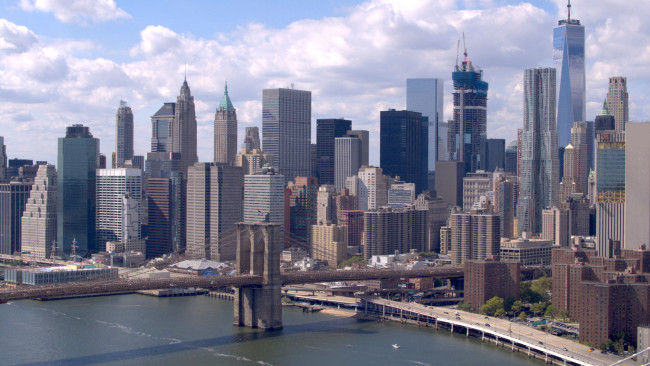Manhattan sales jump as buyers rush to close before July 1 deadline for new mansion tax

The median sales price rose 10.5 percent to $1,215,000, a new record.
iStock
The July 1 deadline for New York City’s new, scaled mansion tax motivated buyers to shake off their hesitation and plunge into the market in the second quarter.
The number of Manhattan sales rose for the first time in seven quarters as buyers rushed to close in time for the deadline, in order to avoid paying $10,000 or more, according to Douglas Elliman’s latest market report for Manhattan co-ops and condos. It’s a big change from the story of the last six quarters, which saw year over year declines in sales.
Jonathan Miller, president of appraisal firm Miller Samuel and author of the report, points out that the last 18 months have been framed by changes in tax policy, starting with the new federal tax law that caps your state and local tax deductions, including property taxes.
Sales activity boosted prices: The median sales price rose 10.5 percent to $1,215,000, a new record that lifts the median above the important million-dollar benchmark.
In the second quarter, the number of sales jumped 12.5 percent to 2,957. This burst of activity shows “consumers are more confident, and also cognizant of tax implications,” Miller says. The most significant sales activity occurred with apartments in the $2 million to $5 million price category—the mansion tax scales upwards more steeply for these price points. Sales of apartments over $20 million also jumped—the new version of the mansion tax is 4.15 percent on sales of $25 million or more.
Of course, it’s important to bear in mind that while there’s been a rise in sales, it is in relation to last year’s slow market.
What does this mean for coming quarters? It's not necessarily a sign of a new trend. Miller says some of the growth was "poached" from the third quarter.
“If buyers were able to close, there seemed to be plenty of incentive to close before the second quarter ended,” Miller says.
There are other reasons it may be too early to announce a recovery. Other indicators are still concerning, including expanding inventory and the time on the market. Listing inventory rose annually for the seventh consecutive quarter and days on market increased 10.7 percent to 114 days.
Resales vs. new development
If you break out inventory for resales and new development, listing inventory for resales expanded year over year for the seventh consecutive quarter. New development appears to be faring better for developers, with a drop in active listings. But developers have the option of holding new condos back from the market when sales are slow, so these are tricky comparisons.
The median sales price for new development fell 8.5 percent. Miller says what’s selling in new development these days is skewed toward the lower end of the market. The average sales price was down nearly 25 percent.
Co-ops vs. condos
The second quarter saw the highest amount of co-ops on the market in six years, while condo sales rose after six straight years of annual declines. The median sales price for co-ops was $835,000, an increase of 3.1 percent year on year. The median price for condos was $1,700,000, a 3 percent increase.
There are some other encouraging signs. Miller says sellers are more negotiable, and the listing discount continues to expand, meaning sellers are coming down more from their asking price, and sellers are pricing apartments closer to what buyers are willing to pay.
Bidding wars in this quarter represent 5.7 percent of all sales—and the last time the market saw that low share was 2010, when bidding wars represented 5.5 percent of sales. It makes sense that bidding wars are so low—when you have a lot of sales inventory, buyers don’t need to fight over listings.
Other market reports
“The urgency imposed by the new mansion tax costs drove greater activity in the upper market ($5 million and above), which has logged more contracts signed in June than in any of the past 12 months,” said Frederick Peters, CEO of Warburg Realty in that firm’s market report.
BOND New York’s market report compared listings on the market to listings in contract and found the number of pending sales was up 36.5 percent since the start of the year
Brown Harris Stevens’s report points out that the average new development sales price was roughly double the average resale price.
Compass says properties spent a notably longer time on the market in the second quarter compared to the year-ago quarter.
CORE’s market report found that Downtown captured the greatest share of closings at 37 percent and averaged the highest price per square foot, $1,894.
Halstead’s market report notes a rush of new development closings, which boosted the average apartment price. “More sellers are adjusting to the market and pricing realistically, and buyers who have been sitting on the sidelines are reacting positively,” says Diane Ramirez, chairman, and CEO of Halstead.
You Might Also Like



























